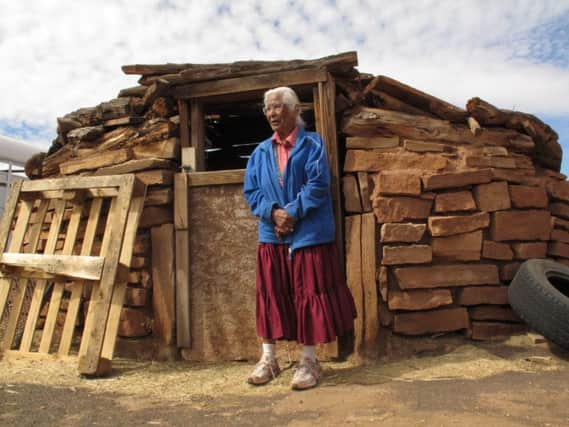Struggle for last of the Navajo living at Wupatki


Their ancestors returned to northern Arizona after a forced march to an internment camp in New Mexico only to find their homelands later designated Wupatki National Monument.
Gradually the Navajo dwindled away, either giving up or under pressure from the US National Park Service, which opposes private use of public lands.
Now only one Navajo woman remains.
Advertisement
Hide AdAdvertisement
Hide AdWhen Stella Peshlakai Smith, 89, dies, her residency permit dies with her, ending the Navajo presence at Wupatki.
But her extended family have vowed to fight for the land surrounded by the Little Colorado River valley, snow-capped mountains and towering mesas, where their sheep once grazed.
Political support is mounting, but it’s up to the US Congress to decide. “This family has had a homestead there for generations and generations, and we want that to be made right,” Navajo Nation politician Walter Phelps said.
Mrs Smith estimates dozens of family members would move back given the chance. The Peshlakais have been struggling to hold on to their ancestral lands for decades, with their main opponent being the Park Service.
The Wupatki visitors’ centre has a 1970 letter on display from the Park Service to a former Arizona senator. It says: “At no time have the Navajos who grazed within the monument had any title in the land. In the absence of appropriate legislation, these lands could not be surrendered to the Peshlakai family. We believe such legislation would not be in the public interest.”
Monument Superintendent Kayci Cook Collins agrees. By all means let tribal members visit to conduct ceremonies, and visit Mrs Smith. But any concession on ownership would open the way for other Navajo families to lay claim to the land.
“In general, units of the National Park Service are not managed to hold private residences on public land,” she said.
Mrs Smith was born at Wupatki a month before it became a national monument, and was raised there by her father, Clyde Peshlakai, who acted as custodian. Along the rugged road that leads to her home are reminders of Navajo homesteads: old sheep corrals, wooden logs pitched for a sweat lodge and a traditional Navajo dwelling where Smith’s great-grandfather, Peshlakai Etsidi, is buried. He was among thousands of Navajos who endured cold, disease and starvation in the US government’s bid to uproot them to Bosque Redondo, New Mexico, in what’s known as the Long Walk.
Advertisement
Hide AdAdvertisement
Hide AdHe returned to northern Arizona around 1870 after the Navajos signed a treaty in return for a reservation. It did not include land that would become Wupatki National Monument, where Etsidi and other Navajos resettled to raise their families and herd sheep. But the Park Service feared overgrazing and asked Navajos to move their sheep and imposed herd limits. Members of the Peshlakai family said they were forced to move beyond the Little Colorado River.
No request to allow the Peshlakais to live at the monument has been submitted to Congress, but the family has an advocate in Democratic congresswoman Ann Kirkpatrick. She said: “We cannot forget that the people who have emerged with the land are inseparable.”
Smith has a rare letter of authorisation from the Park Service allowing lifetime residency at Wupatki. Her daughter, Helen Peshlakai Davis, gave up a right to pursue residency in exchange for land north of Flagstaff but claims she was not fully informed of her rights. In Navajo belief, she is tied to Wupatki because her umbilical cord is buried there beneath a sheep pen.
While the Peshlakai family once had free rein over the more than 35,000 acres that make up the monument, Mrs Smith now lives on a much smaller plot without sheep but with the electricity and running water she grew up without.
Mrs Smith said any Navajo family whose ancestors settled the area should be welcomed back. “It belongs to them… everything that’s here,” she said through a Navajo interpreter.